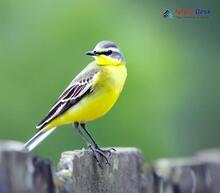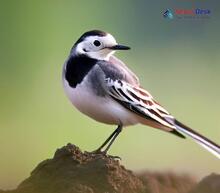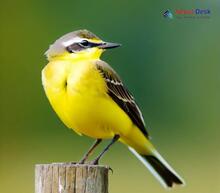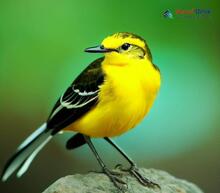Nestled between China and India, Nepal is a landlocked country boasting diverse wildlife and stunning landscapes. Among its lesser-known wonders is the bird genus Motacilla, which includes various wagtails and pipits that inhabit the region. Let us delve into the captivating world of Motacilla birds and where to spot them during your journey to this magical country.
The Motacilla genus encompasses approximately 60 distinct bird species, many of which exhibit a unique tail-wagging behavior that earned them the nickname "wagtails." Indigenous to Eurasia and Africa, these small, slim birds grace the heavens with their elegance and poise. Although characteristics vary between species, most possess elongated tails, slender frames, and lengthy legs.
The White Wagtail (Motacilla alba) is a widespread member of the Motacilla genus in Nepal. Sporting a chic black-and-white pattern with a grayish back, these delightful birds captivate onlookers as they energetically wag their tails while hunting insects along riverbanks or fields. White Wagtails can be found across Nepal, from lowland marshes to elevated meadows.
The Gray Wagtail (Motacilla cinerea) is another renowned Motacilla species in Nepal. Larger than their white counterparts, they display more vivid plumage with bright yellow underparts contrasting against gray upper sections. Gray Wagtails reside near rapid streams and rivers – lower elevations during winter and higher elevations in the mountains for the summer breeding season.
Arguably among the most striking members of this genus is the Citrine Wagtail (Motacilla citreola), adorned with vibrant yellow and grey hues. Breeding in the Himalayan alpine meadows, Citrine Wagtails migrate southwards to lower Nepalese elevations during winter. Watching these gorgeous birds forage along riverbanks or wetlands ensures a lasting impression for any bird enthusiast visiting Nepal.
When planning a trip to Nepal, remember to pack your binoculars and keep an eye out for these enchanting Motacilla birds. With their elegant motions, mesmerizing colors, and fascinating tail-wagging behavior, they are a true spectacle to witness and will undoubtedly enhance your Nepalese experience. As always, be respectful and conscientious while exploring natural habitats to ensure the preservation of these extraordinary birds' environments for future generations to appreciate.




